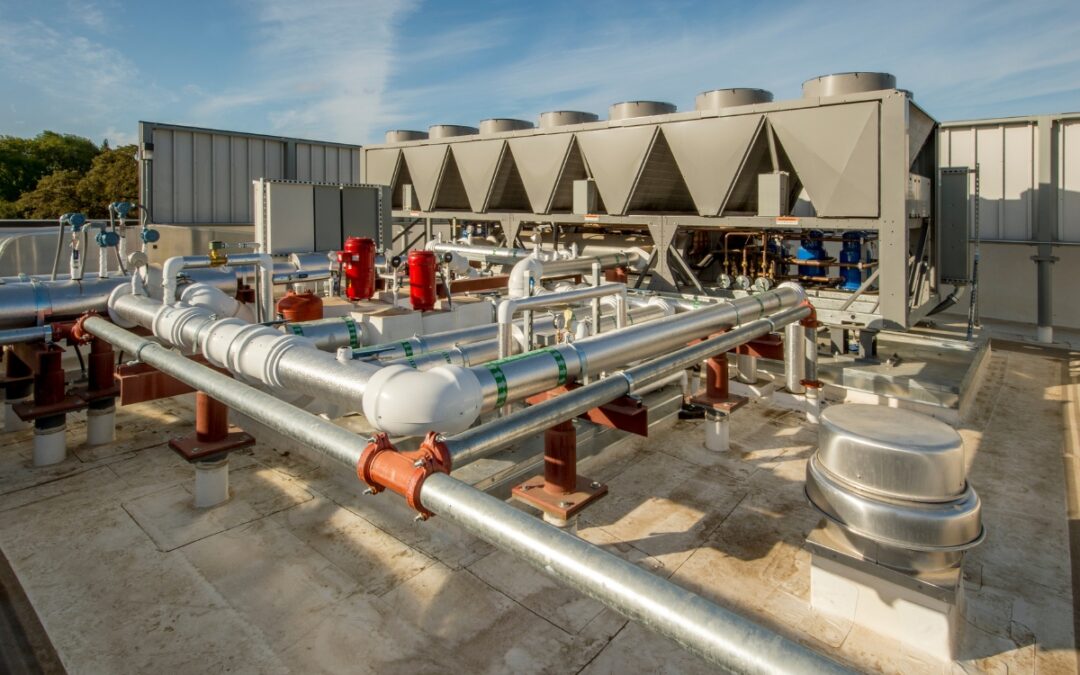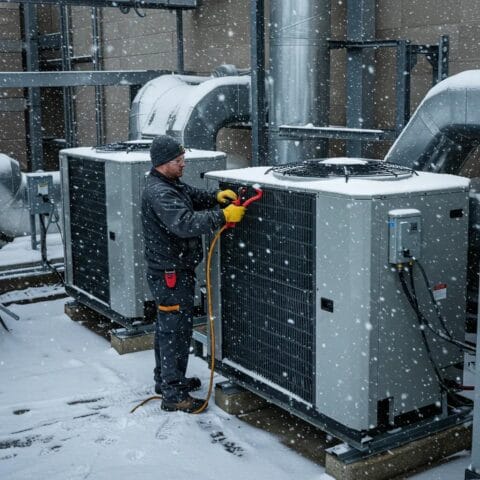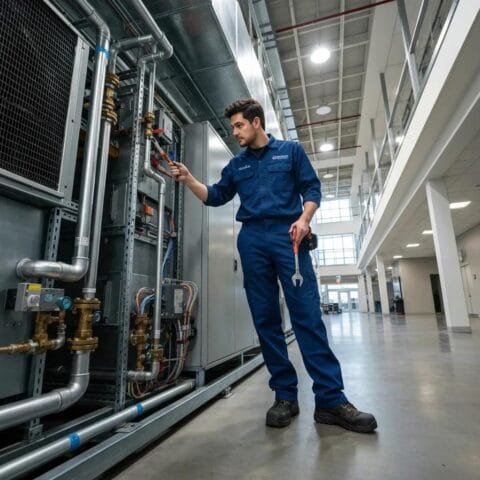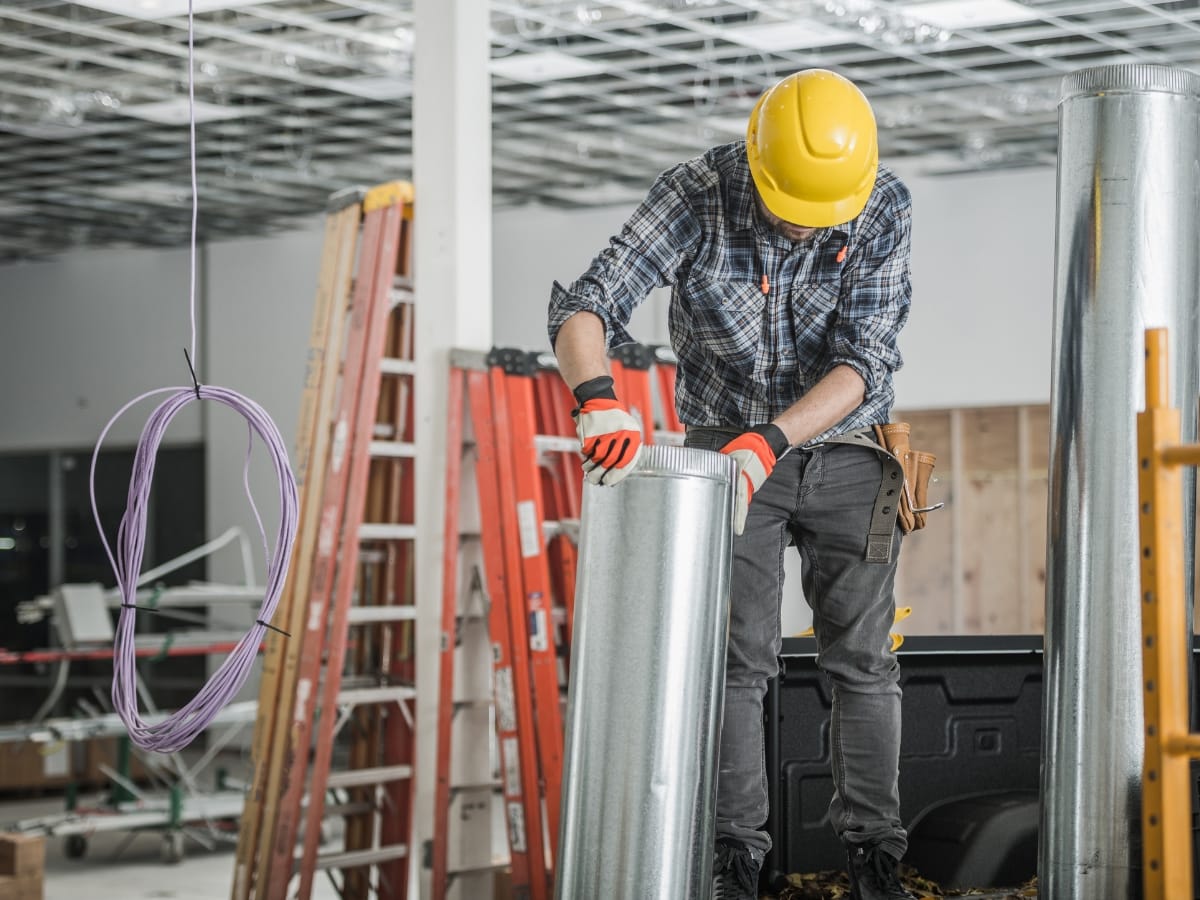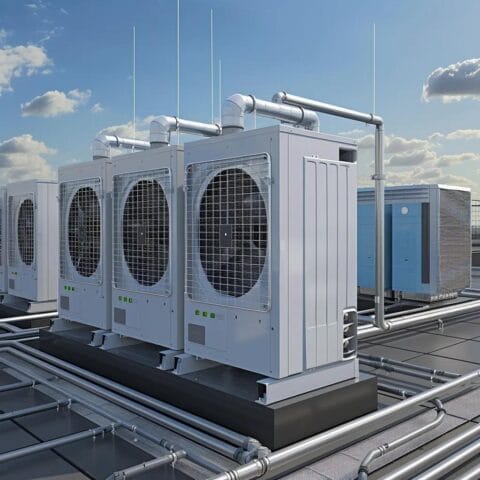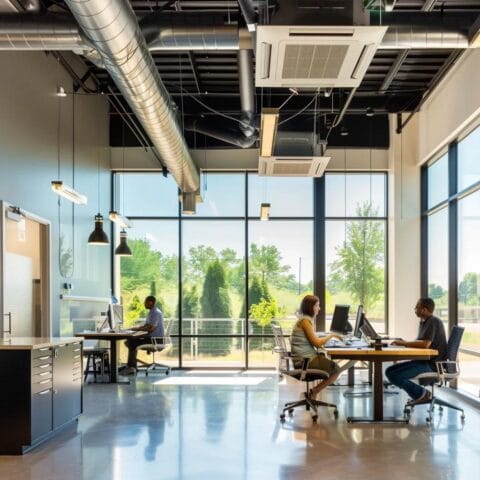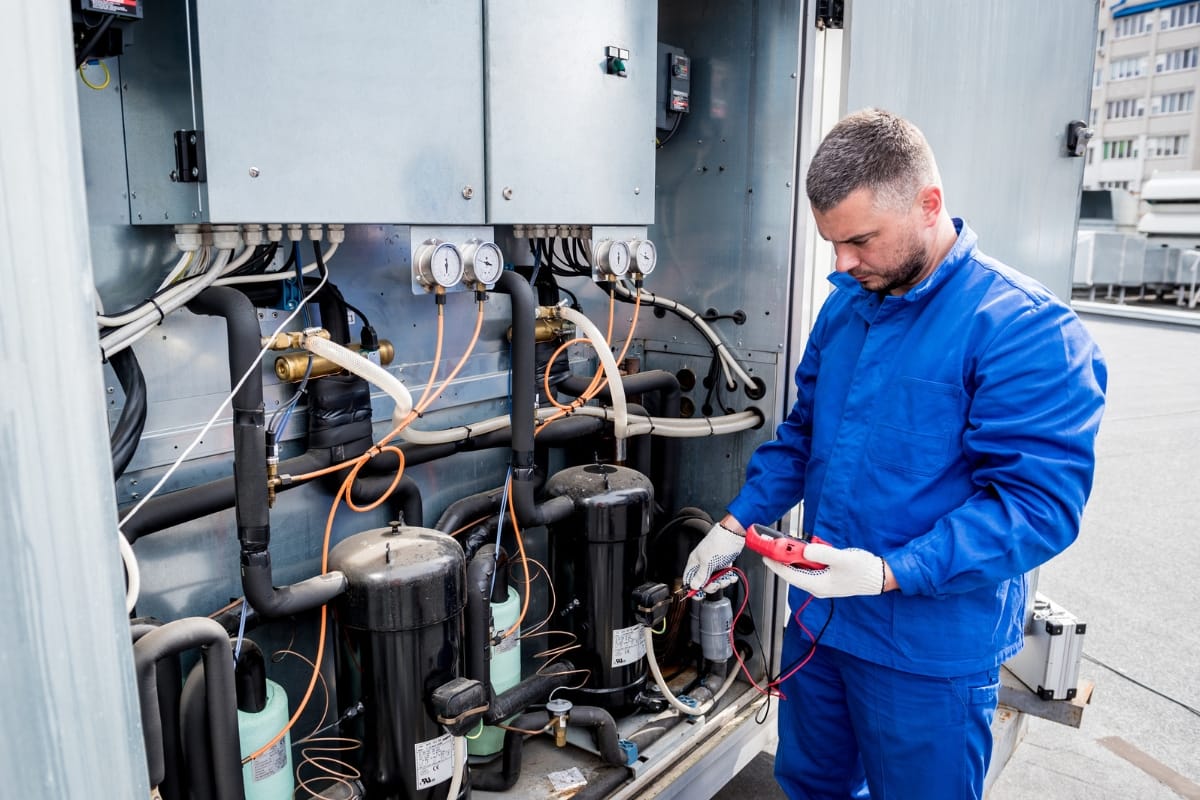As environmental concerns continue to rise, commercial buildings are increasingly seeking ways to reduce their ecological footprint. One of the most significant areas for improvement is the impact of HVAC systems, which are often responsible for a large portion of a building’s energy consumption and greenhouse gas emissions.
By adopting energy-efficient technologies, optimizing system performance, and integrating sustainable practices, commercial buildings can significantly minimize their HVAC environmental impact. In this guide, we’ll explore practical strategies that can help businesses reduce their HVAC-related emissions, lower energy costs, and contribute to a greener future.
HVAC and the Environment: Are You Aware of Its Impact?
Understanding the Environmental Impact of HVAC Systems in Commercial Buildings
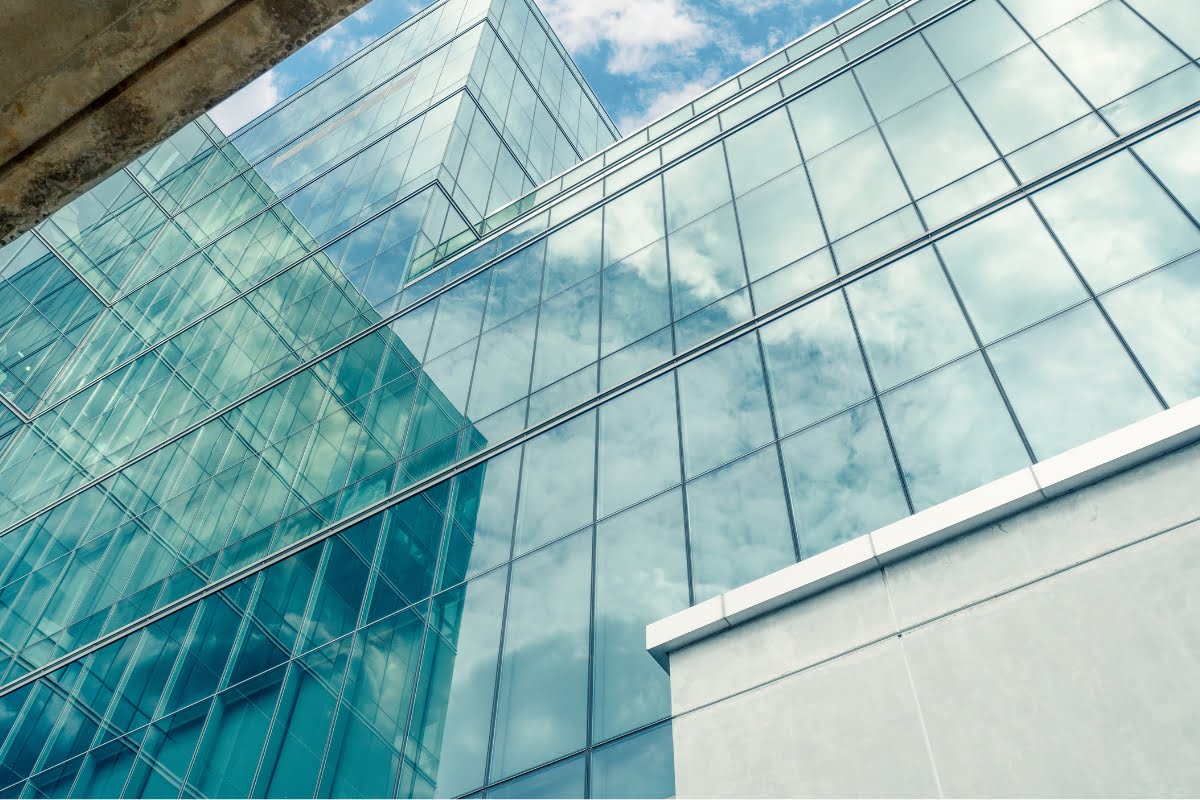
HVAC systems play a crucial role in maintaining comfortable indoor environments in commercial buildings. However, these systems also have a significant environmental impact. Understanding this impact is the first step towards minimizing it and creating greener commercial spaces.
One of the primary environmental concerns associated with HVAC systems is their energy consumption. Traditional HVAC systems often consume large amounts of electricity, contributing to greenhouse gas emissions and climate change. Additionally, the refrigerants used in these systems can deplete the ozone layer if not handled properly.
To address these issues, businesses must adopt energy-efficient HVAC that reduces energy use without compromising performance. Energy-efficient HVAC systems utilize advanced technologies such as variable speed compressors and smart controls to optimize energy usage based on real-time demand. By investing in these technologies, commercial buildings can significantly reduce their carbon footprint.
In addition to energy use, HVAC systems in commercial buildings contribute to environmental impact through water usage, particularly in cooling towers. Cooling systems often require substantial water resources, which can strain local water supplies, especially in drought-prone areas. This water use, combined with the potential for chemical contamination from water treatment processes, further amplifies the environmental footprint of HVAC systems.
Another consideration is waste management, particularly regarding the disposal of older HVAC systems. If not properly recycled, old units can contribute to landfill waste and environmental pollution due to the hazardous materials they contain, such as refrigerants and heavy metals.
To mitigate these effects, building managers should prioritize regular maintenance and upgrades to more sustainable HVAC systems. This can include adopting renewable energy sources like solar-powered HVAC systems, utilizing heat recovery systems, and implementing eco-friendly refrigerants that have a lower global warming potential. These proactive measures contribute to a more sustainable operation and long-term environmental benefits.
Embracing Energy-Efficient HVAC Equipment
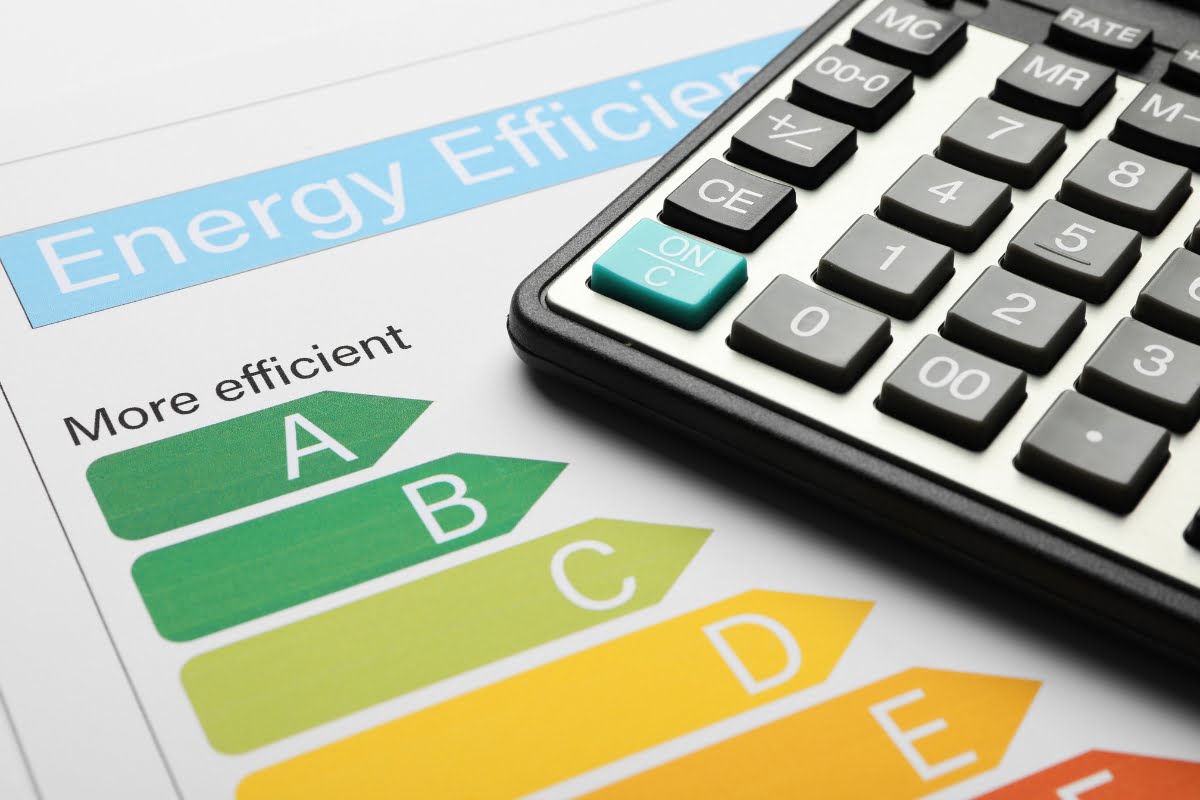
The key to minimizing the environmental impact and the emission of greenhouse gases by HVAC systems lies in embracing energy-efficient equipment. Upgrading to high-efficiency units can result in substantial energy savings and reduced greenhouse gas emissions.
HVAC systems play a significant role in a building’s energy use, with heating and cooling accounting for a large portion of overall energy usage. Choosing energy-efficient HVACs can lead to substantial savings in the long run.
Energy-efficient HVAC equipment incorporates innovative features such as improved insulation, advanced filtration systems, and variable refrigerant flow technology. These systems are designed to operate more efficiently, thereby reducing energy use and greenhouse gas emissions.
Regular maintenance and servicing of HVAC are essential to ensure optimal performance and efficiency. By keeping systems well-maintained, businesses can extend the lifespan of their HVAC and maximize energy savings.
Businesses can also explore innovative solutions such as smart thermostats, zoning systems, and building automation to further improve energy efficiency. These technologies help optimize HVAC performance based on building occupancy and usage, leading to significant energy savings.
Furthermore, businesses can consider using hybrid or geothermal heat pump systems that harness renewable energy sources like solar or geothermal power. These sustainable alternatives not only reduce reliance on fossil fuels but also provide long-term cost savings.
Harnessing Renewable Energy Sources for HVAC Operations
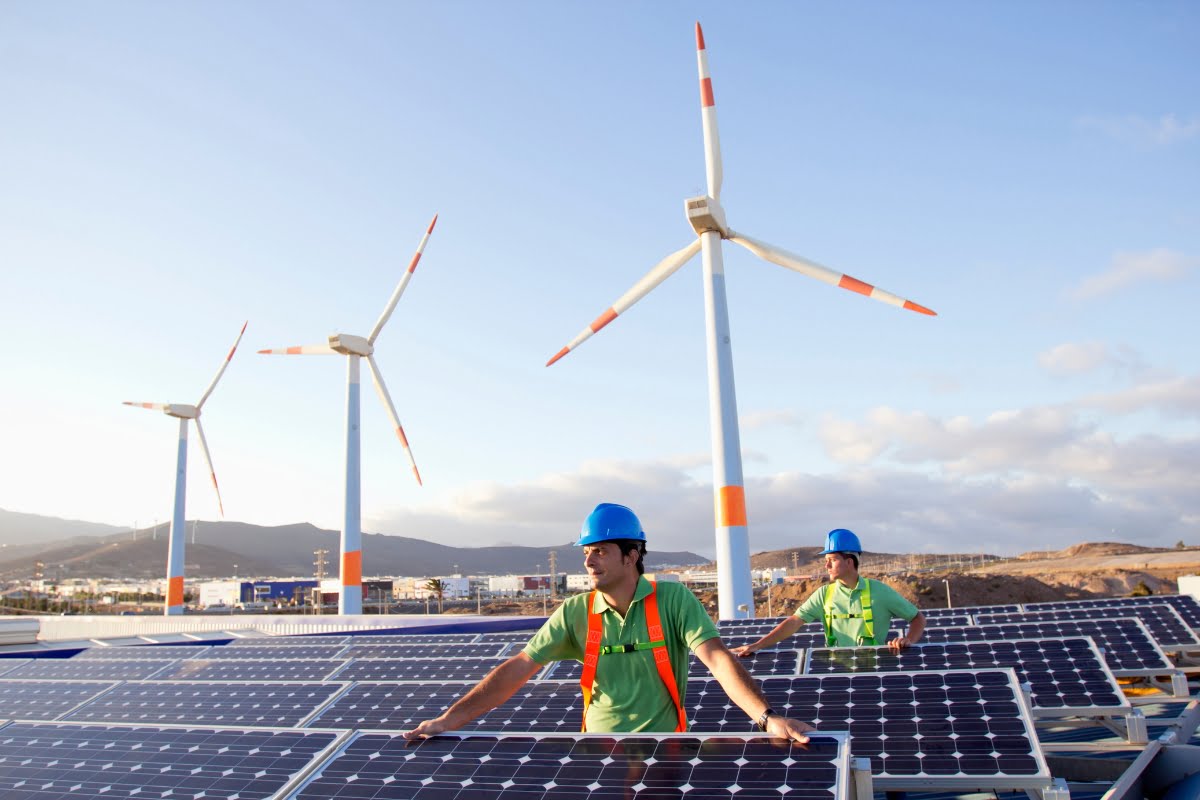
When it comes to minimizing the environmental impact of HVAC operations in commercial buildings, harnessing renewable energy sources is key.
- Solar Panels: Solar panels are increasingly becoming a go-to solution for commercial buildings aiming to incorporate renewable energy into their HVAC operations. By converting sunlight into electricity, solar panels can power HVAC systems efficiently, reducing reliance on non-renewable energy. This shift not only decreases the building’s carbon footprint but also translates into long-term cost savings on energy bills, making it a financially viable option over time.
- Geothermal Systems: Geothermal energy offers a highly sustainable alternative for heating and cooling buildings. These systems utilize the consistent temperatures found underground to regulate indoor climate. By tapping into this natural resource, geothermal systems can provide efficient HVAC operations with minimal environmental impact. These systems are particularly beneficial in regions with extreme weather conditions, offering stable and cost-effective energy throughout the year.
- Wind Turbines: Incorporating wind turbines into a building’s energy infrastructure can further reduce its dependence on fossil fuels. Wind power is a clean, renewable energy source that, when used to generate electricity for HVACs, contributes to a greener and more sustainable operation. Commercial buildings in windy areas can particularly benefit from this renewable energy option, offsetting a significant portion of their energy needs with wind-generated electricity.
- Biomass Energy: Biomass energy involves converting organic materials like wood, agricultural residues, and waste into usable energy. This renewable source can power HVACs in commercial buildings by providing heat through biomass boilers or even generating electricity. Biomass energy is carbon-neutral, as the carbon dioxide released during combustion is offset by the carbon absorbed by plants during their growth.
- Hydropower: While more commonly associated with large-scale energy production, small hydropower systems can also be employed by commercial buildings located near water sources. By harnessing the energy from flowing water, these systems can generate electricity to power HVAC operations. This renewable energy source is reliable and can provide consistent energy output, especially in areas with abundant water resources.
By integrating these renewable energy sources, commercial buildings can significantly reduce the environmental impact of their HVACs, contribute to sustainability efforts, and potentially save on long-term operational costs.
Implementing Smart Thermostat Technology for Optimal Temperature Control
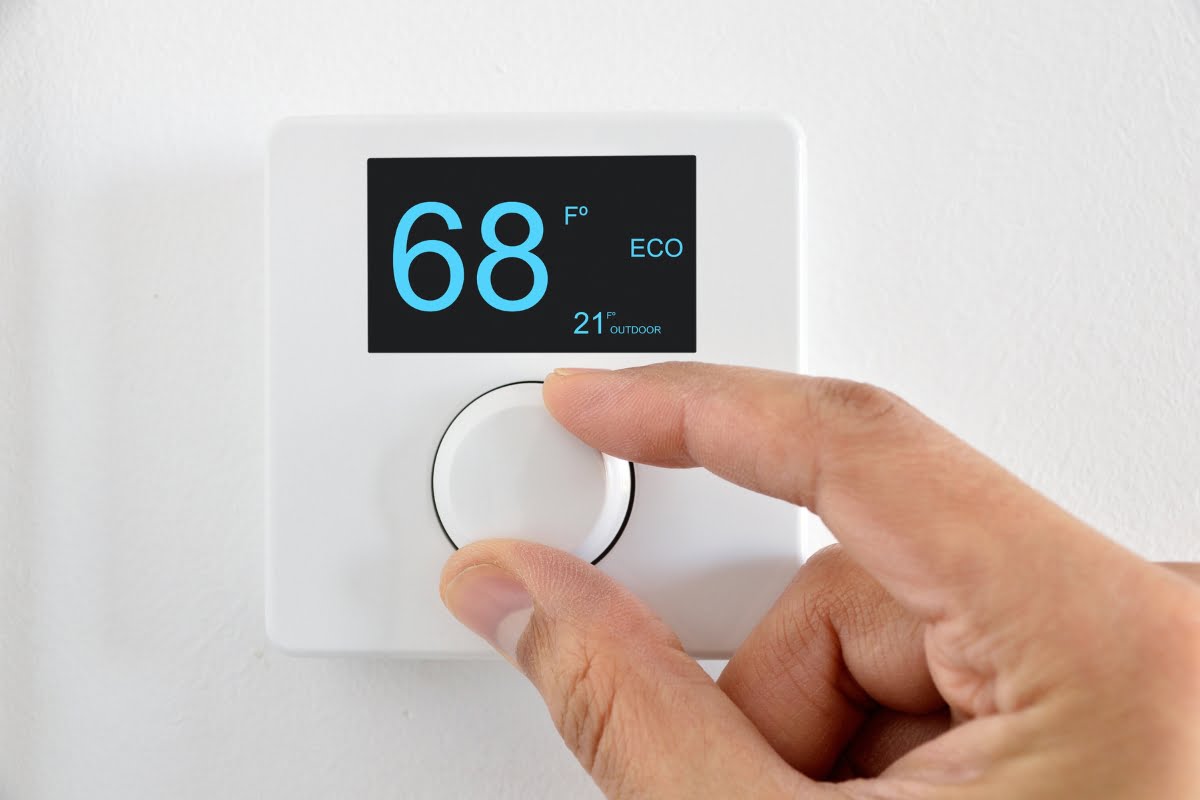
Smart thermostat technology is revolutionizing the way we control temperatures in commercial buildings to minimize HVAC environmental impact. By integrating these advanced systems, businesses can achieve greater efficiency and sustainability in their heating, ventilation, and air conditioning operations.
One of the key advantages of smart thermostats is their ability to adapt to changing environmental conditions in real-time. This dynamic adjustment ensures that HVACs only consume the necessary energy, thereby reducing overall environmental impact. By optimizing temperature control based on occupancy patterns and weather forecasts, smart thermostats help commercial buildings operate more efficiently.
Furthermore, smart thermostats offer remote accessibility, allowing facility managers to monitor and adjust settings from anywhere at any time. This level of control enables proactive maintenance, early issue detection, and strategic energy management, ultimately leading to a more sustainable HVAC operation.
Smart thermostat technology also enhances occupant comfort. By ensuring optimal temperatures throughout the building, employees and visitors can enjoy a more pleasant indoor environment, leading to increased productivity and satisfaction.
Investing in Regular HVAC Maintenance and Upgrades
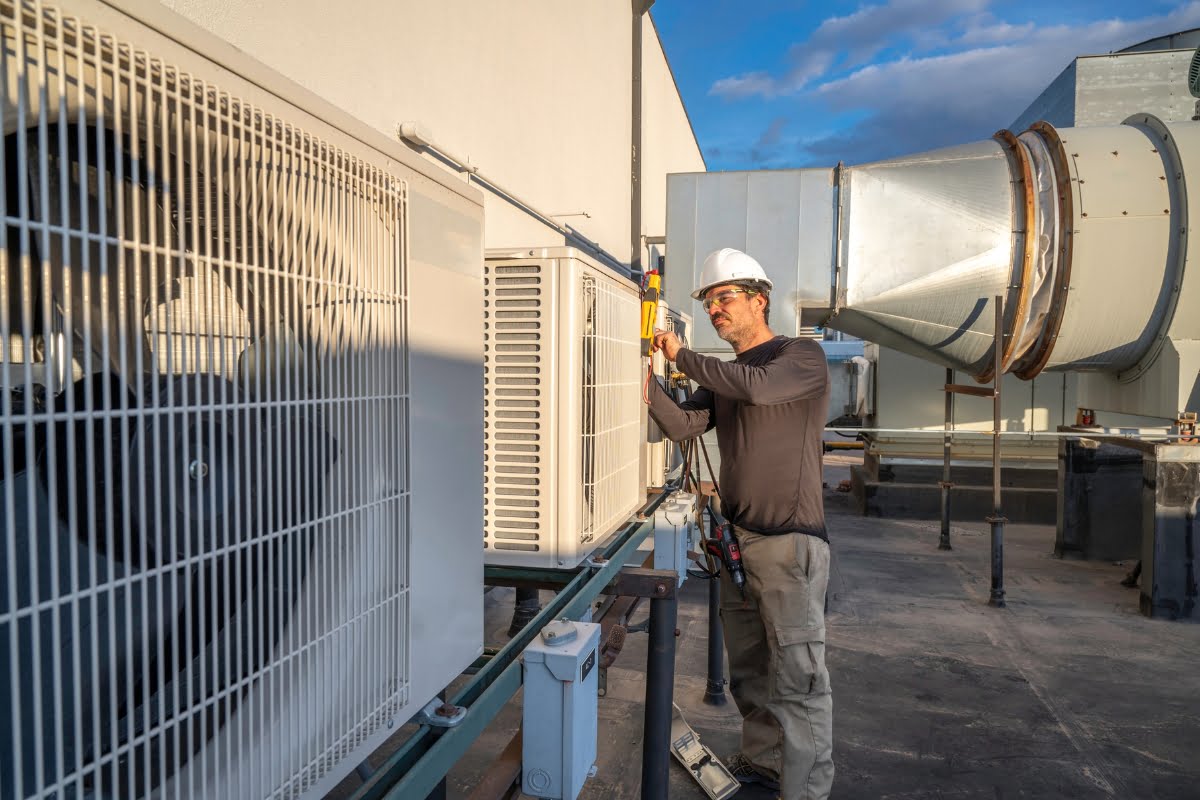
Investing in regular HVAC maintenance and timely upgrades is essential for reducing the environmental impact of commercial buildings.
Regular maintenance helps to keep HVACs running efficiently, preventing energy waste and minimizing unnecessary greenhouse gas emissions. This involves routine inspections, cleaning of filters, and checking for any leaks or issues that could compromise the system’s efficiency.
Upgrading to modern, energy-efficient HVACs is another critical step alongside regular maintenance. Newer systems are designed to consume less energy while providing better performance, leading to a significant reduction in both energy costs and carbon footprint. For instance, upgrading to systems with variable speed technology, smart controls, and eco-friendly refrigerants can make a substantial difference in sustainability efforts.
These proactive measures not only enhance the longevity of HVACs but also contribute to a healthier indoor environment by improving air quality. Proper maintenance and timely upgrades not only benefit the environment but also improve the overall performance of HVACs.
Clean filters, calibrated thermostats, and well-functioning components ensure optimal airflow and temperature regulation. This not only extends the lifespan of HVAC equipment but also enhances indoor comfort for building occupants.
Enhancing Indoor Air Quality Through HVAC System Innovations

Enhancing indoor air quality (IAQ) through HVAC system innovations is crucial for creating healthier and more sustainable commercial environments. As buildings become more energy-efficient and airtight, the role of air conditioning units and HVAC in maintaining good IAQ becomes increasingly important. Advanced technologies and practices can help ensure that the air inside commercial spaces is clean, safe, and comfortable for occupants.
One significant innovation in HVAC is the integration of advanced filtration systems, such as HEPA filters. These filters are highly effective at capturing airborne pollutants, including dust, pollen, mold spores, and even certain viruses and bacteria.
By trapping these contaminants, HEPA filters help reduce the concentration of harmful particles in the air, leading to better respiratory health for building occupants. Additionally, these filters are particularly beneficial in environments where air quality is critical, such as healthcare facilities and office buildings.
Another innovation that enhances IAQ is the implementation of ultraviolet germicidal irradiation (UVGI) systems. UVGI technology uses ultraviolet light to disinfect the air by neutralizing microorganisms like bacteria, viruses, and mold spores that circulate within the HVAC system.
When installed in air handling units or ductwork, UVGI systems can prevent the spread of airborne pathogens and improve overall hygiene within the building. This technology is especially valuable in high-traffic areas or spaces prone to contamination, such as hospitals, schools, and commercial kitchens.
HVAC systems can also be equipped with humidity control features to maintain optimal moisture levels. Excess humidity can promote the growth of mold and mildew, which can negatively impact IAQ. By regulating humidity levels, HVACs help prevent these issues and create a more comfortable and healthier indoor environment.
Incorporating these air conditioning innovations into commercial buildings not only improves IAQ but also enhances energy efficiency and occupant well-being. As businesses continue to prioritize sustainability and employee health, investing in advanced HVAC technologies is a vital step toward achieving these goals.
Monitoring and Analyzing HVAC Performance Data for Continuous Improvement
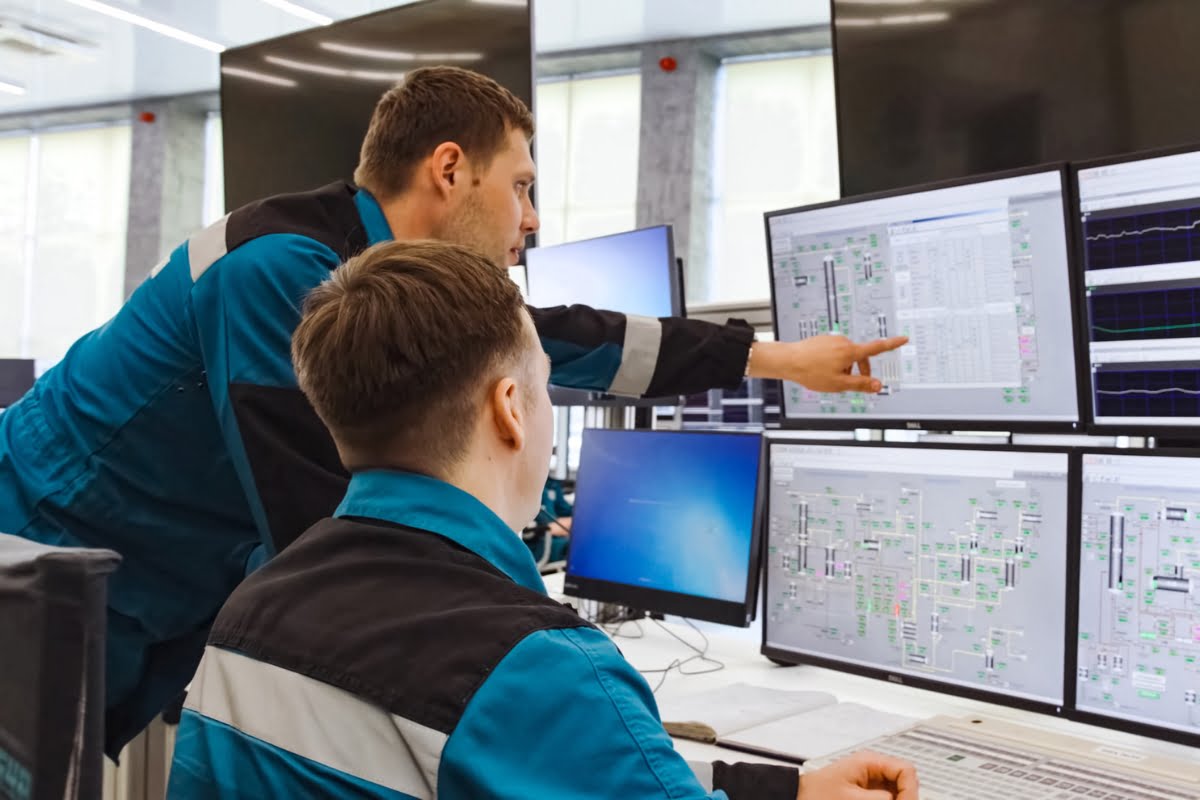
Monitoring and analyzing HVAC performance data is crucial for continuous improvement in commercial buildings aiming to minimize their environmental impact. By closely examining HVAC systems’ efficiency and effectiveness, building managers can make informed decisions to enhance energy conservation and reduce carbon footprints.
Data monitoring plays a key role in assessing HVAC environmental impact. Gathering information on energy consumption, indoor air quality, and system performance enables building operators to identify areas for improvement. Regular data analysis helps in pinpointing inefficiencies, malfunctions, or deviations from optimal performance, allowing for timely corrective actions to be taken.
Utilizing advanced monitoring tools and software, such as energy management systems and IoT sensors, provides real-time insights into HVAC operations. These technologies enable the tracking of energy usage patterns, temperature variations, and equipment performance, empowering facility managers to proactively address issues and optimize system efficiency.
Analyzing HVAC performance data also involves comparing current results with historical benchmarks and HVAC industry standards. By establishing key performance indicators (KPIs) related to energy efficiency and environmental impact, building operators can track progress over time and set targets for improvement. This data-driven approach facilitates continuous optimization of HVAC systems to achieve sustainability goals.
Educating Building Occupants on Energy Conservation Practices
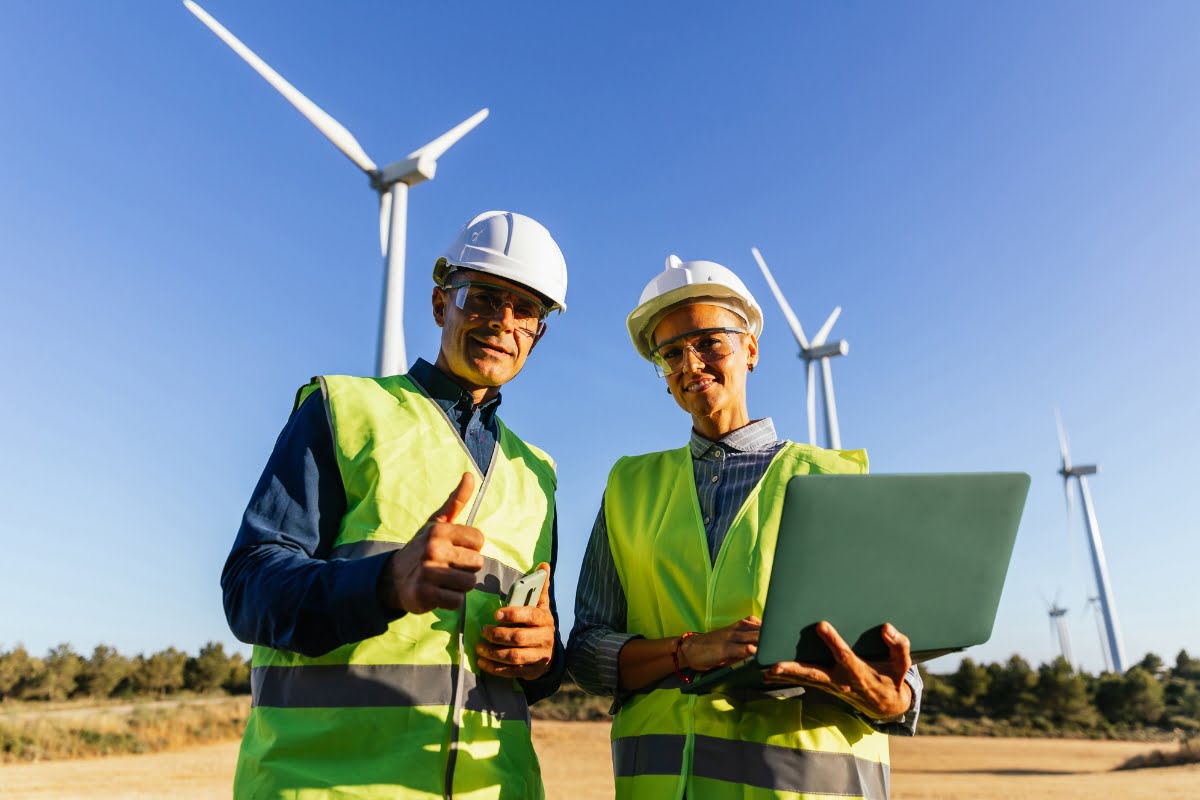
Educating building occupants on energy conservation practices plays a crucial role when it comes to minimizing the HVAC environmental impact in commercial buildings. By raising awareness and promoting sustainable habits, occupants can actively contribute to reducing energy consumption and subsequently lessen the environmental footprint of HVAC systems.
One of the key aspects of educating building occupants on energy conservation practices is to emphasize the importance of regular HVAC maintenance. Ensuring that heating, ventilation, and air conditioning systems are properly serviced not only improves efficiency but also prolongs their lifespan, reducing the overall environmental impact.
Another effective way to educate occupants is by encouraging them to adjust the thermostat settings appropriately. Simple actions such as setting the temperature a few degrees lower in winter and higher in summer can lead to significant energy savings, ultimately reducing the HVAC environmental impact.
Promoting the use of natural light and ventilation whenever possible can also help decrease the reliance on artificial lighting and air conditioning. Occupants can be encouraged to open windows for fresh air circulation and utilize natural daylight to reduce the need for excessive lighting, thereby conserving energy.
Educating building occupants about the importance of insulation and sealing gaps in doors and windows can enhance the overall energy efficiency of the building. By preventing heat loss in winter and heat gain in summer, proper insulation contributes to optimizing HVAC performance and lowering its environmental impact.
By integrating these energy conservation practices into the daily routines of building occupants, commercial buildings can make significant strides in minimizing the HVAC environmental impact. Through education and awareness, occupants become active participants in promoting sustainability and reducing energy consumption, ultimately creating a more eco-friendly and energy-efficient built environment.
Collaborating with Sustainability Experts and Green Building Certifications

When it comes to minimizing HVAC environmental impact in commercial buildings, collaborating with sustainability experts and obtaining green building certifications can play a pivotal role. These partnerships and certifications not only enhance the building’s eco-friendly initiatives but also contribute to long-term sustainability goals.
Sustainability experts bring a wealth of knowledge and experience in implementing energy-efficient solutions for HVAC systems. By working closely with these professionals, commercial building owners can identify areas for improvement, implement energy-saving measures, and optimize HVAC operations to reduce environmental impact.
Green building certifications such as LEED (Leadership in Energy and Environmental Design) or BREEAM (Building Research Establishment Environmental Assessment Method) provide a framework for sustainable building practices. Achieving these certifications requires meeting strict criteria related to energy efficiency, water conservation, indoor air quality, and overall environmental performance.
Collaborating with sustainability experts can help commercial buildings navigate the certification process efficiently. These experts can offer guidance on sustainable HVAC design, equipment selection, and maintenance practices that align with the requirements of green building certifications.
By incorporating sustainable HVAC solutions endorsed by HVAC companies, experts, and certifications, commercial buildings can significantly decrease their HVAC environmental impact. This not only benefits the environment but also helps reduce operating costs and enhance the overall value of the property.
Conclusion: Paving the Way for a Greener Future in Commercial Buildings
Minimizing the environmental impact of air conditioners and HVAC systems in commercial buildings is essential for both sustainability and cost efficiency. For expert solutions that reduce your building’s carbon footprint while maximizing performance, choose Galgon HVAC & Mechanical Service. Our team specializes in HVAC services tailored to your business needs.
Contact us today at (404) 352-1500 or visit our website for a service request or quote. Let Galgon HVAC & Mechanical Service help you create a more sustainable and efficient commercial space.

